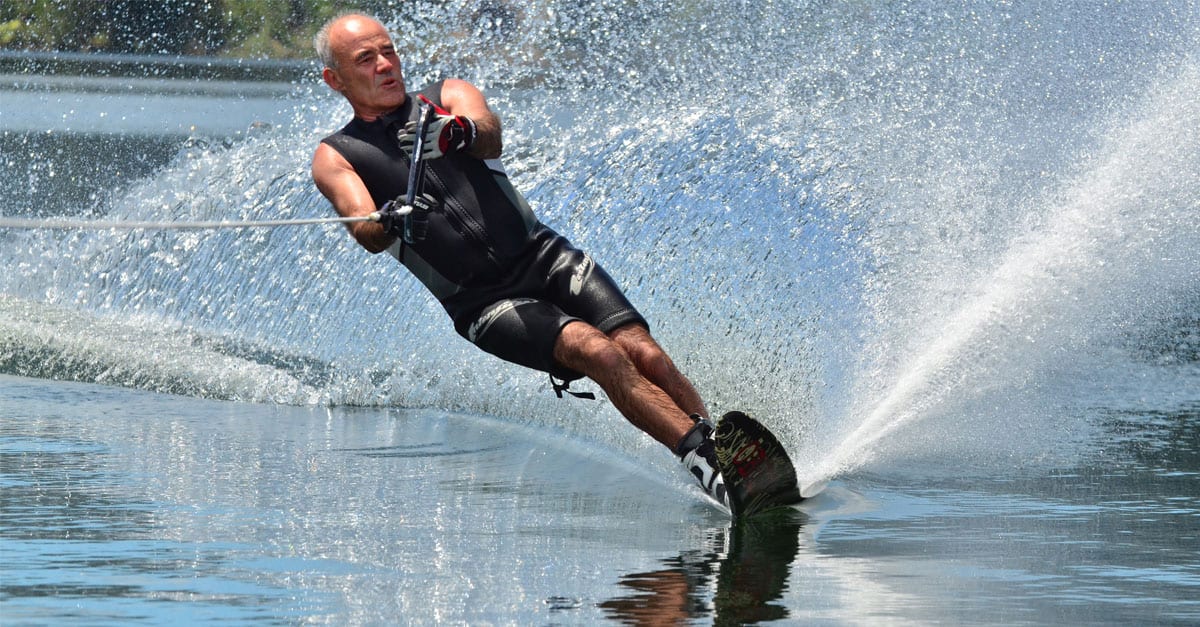
Water skiing and tubing are summertime family favorites but they can also present some danger for you and your loved ones - specifically, a distal biceps tendon injury.
In a report by the Center for Injury Research and Policy of The Research Institute at Nationwide Children's Hospital, water tubing-related injuries increased 250 percent with the most common injuries resulting in strains and sprains. A distal biceps tendon injury can range from a simple strain to a complete tendon rupture. If you’ve gotten hurt while out on the lake, here’s what you need to know.
Is It tendinitis or a tendon rupture?
The biceps is the muscle that bends your arm and allows you to twist your wrist. This muscle is located at the front of your upper arm and extends from your shoulder to your elbow. It is attached to the bone with strong tissue called tendons. A distal biceps tendon injury can be caused by strain from a sudden increase in amount or intensity of activity (tendinitis), or a tear from trauma (rupture).

Distal biceps tendinitis
With overuse of the biceps, the tendons can experience micro tears called tendinitis. Distal biceps tendinitis is characterized by pain and tenderness in the front of the elbow from the inflamed tendon. This usually comes on slowly and can progressively worsen.
"With overuse of the biceps, the tendons can experience micro tears called tendinitis."Brandon P. Donnelly, MD
Distal biceps tendon rupture
If the bicep is forcefully extended, as would occur while holding a rope being pulled by a boat or when bracing for a fall, you may experience a rupture - a tear of more than 50% of the tendon from the radial bone, or elbow. This is a more extreme tearing that occurs near the bend in your arm.
A rupture of the distal bicep tendon will cause a sharp pain and may cause a “pop." You may experience weakness and bruising in the arm. In a more severe distal biceps injury, you may see a bulging of the front of your bicep in the upper arm, called “Popeye muscle."
"In a more severe distal biceps injury, you may see a bulging of the front of your bicep in the upper arm, called 'Popeye muscle.' "Brandon P. Donnelly, MD
Treatment options for a distal biceps tendon injury
If you’ve hurt yourself water skiing, tubing, or falling, and the pain doesn't improve within a few days, you should see a doctor. An X-ray and if needed, an MRI can be performed to properly determine the extent of the injury. If you do have a distal biceps tendon rupture you may require a surgery to reattach the tendon to the bone.
Treatment options for distal biceps tendonitis
Contrary to the acute injury experienced with a rupture, tendonitis usually does not have a memorable “event." If you’ve had worsening pain to this area that does not resolve with rest and over the counter medicine, it may be time to see your doctor. Treatment for tendinitis is often nonsurgical: using cold packs, prescription anti-inflammatory medications, rest, physical therapy, and corticosteroids.
What to expect during your recovery
It may take several months, or even up to a year for you to fully recover from a distal biceps injury. While your tendon heals, you may need a splint and sling for four to six weeks. Physical therapy may be required to ensure you regain full range of motion and to help you regain strength.
Don’t ignore elbow injuries
Although these kinds of injuries can happen with various activities, being careful while tubing or water skiing is especially necessary. If you should sustain an injury, please contact our offices for diagnosis and treatment as soon as possible.
This site is not intended to and does not provide medical advice, professional diagnosis, opinion, treatment or services to you or to any other individual. Through this website and links to other websites, Brandon P. Donnelly, MD provides general information for educational purposes only. The content provided in this website and links, is not a substitute for medical care or treatment. You should not use this information in place of a consultation or the advice of your healthcare provider. Brandon P. Donnelly, MD is not liable or responsible for any advice, course of treatment, diagnosis or any other information, services or product you obtain through this site.

